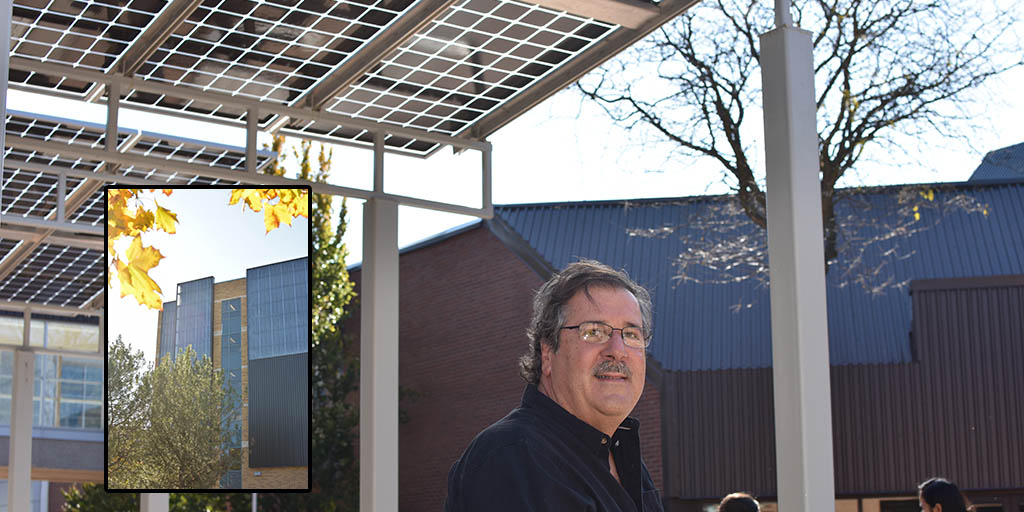Designing for the future? Follow Fanshawe's lead
 CREDIT: JASON MACDONALD
CREDIT: JASON MACDONALDTom Davis hopes to show the world Fanshawe's climate change-fighting potential.
If you’re looking forward to what the future of a climate-conscious society looks like, you will find glimpses of it on the sides and roofs of Fanshawe College. The College has been working to apply research that its faculty and students have been conducting with a variety of climate-friendly solutions.
The College has trialling two building technologies that hold quite a bit of promise. Solar panels have been installed on campus buildings and on the student residences next to the college. Kestrel Court has been a key pilot project and aims to show how affordable housing can be modified to be the most energy-efficient form of housing.
Interrobang covered the story back in June; you can watch the video, with reporter Marlon Francis, at theinterrobang.ca. Fanshawe also aims to build a house with all of the energy used to construct the building produced on site, using carbon neutral generators like solar panels. Continuing on the retrofitting road, Fanshawe also plans to rework its heating systems by installing giant wall units (some of which are already in place). These giant solar walls use the sun’s energy for heating and also recapture escaping heat to recycle through the system.
So why the sudden frenzy to go such a bright shade of hippie green?
Part of it has to be attributed to one of Fanshawe’s own faculty: Tom Davis. Davis is a professor at the Donald J. Smith School of Building Technology, and his background with climate change work is extensive.
Davis has worked closely with former U.S. presidential candidate Al Gore and his foundation the Climate Reality Project. Through this, Davis has been able to connect Fanshawe to leaders with real and practical solutions to tackling climate change. That is exactly what Fanshawe and Davis are hoping to demonstrate at Fanshawe. The guiding message is that fighting climate change is not as hard as it has been made out to be.
Davis said he believes that much of the confusion over what to do about climate change stems from misinformation created by industries dependent on carbon.
“The carbon fuel industry has an incentive in keeping things the way they are,” Davis said. “All they have to do is raise doubt and everything stays the same.”
Davis has a main message: “We’ve waited too long, time is of the essence. We’ve got to get going yesterday.”
Getting that message out has been the most difficult part of his campaign here at Fanshawe. So on Nov. 20 to 21, Davis along with the many others partaking in the Climate Reality Project, will hold a 24-hour live stream at 24hoursofreality. org to raise awareness of the solutions to reduce the effects of climate change — solutions like the ones being test piloted here at Fanshawe and other locations around the world.
Davis said that through this work he is contributing to the protection of future generations. At the time of writing this article, 200, 000 people were evacuated in the middle of the night in California, according to NBC. These wildfires are an example of what Davis fears will happen if we do nothing to prevent climate change.
“Over the next hundred years, most of the United States will be a great desert and most of the Great Lakes will be drained,” he said.
Despite these negatives, Davis is still optimistic.
“I tell my students, humans are a good team, we’ve just had kind of a bad century.”
This climate optimism is what drives Davis’ work and he hopes to share that with others.















